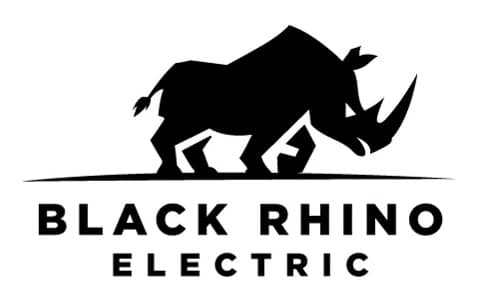Becoming a certified electrician opens the door to a rewarding career filled with growth opportunities, but getting there can feel overwhelming without the right guidance. At Black Rhino Electric, we know that understanding the process is key to staying motivated and confident. Whether you’re just starting to think about this career or are ready to dive in, we’ve got you covered. This blog will break down the steps into simple, digestible chunks to help you turn your dream into reality.
Contents
- 1 Why Become a Certified Electrician?
- 2 Understanding the Certification Process
- 3 Step 1: Get Your High School Diploma or Equivalent
- 4 Step 2: Enroll in an Electrician Program
- 5 Step 3: Pursue an Apprenticeship
- 6 What Does an Apprenticeship Involve?
- 7 Step 4: Understand Licensing Requirements
- 8 Step 5: The Key Benefits of Certification
- 9 Step 6: Take and Pass Your Certification Exam
- 10 Keeping Your Certification Active
- 11 Tips for a Successful Electrician Career
- 12 Final Thoughts
Why Become a Certified Electrician?
The world is powered by electricity, and electricians are the superheroes who keep the lights on (literally). Skilled electricians have job security, competitive wages, and opportunities to specialize in exciting fields like renewable energy or automation technology.
If you’re a hands-on person who enjoys solving problems, this career path might just be your calling. Plus, as long as homes and businesses need power, electricians will always be in demand. Sounds like a win, right?
Understanding the Certification Process
Becoming an electrician isn’t something that happens overnight, but we promise it’s worth the effort. The certification process includes classroom learning, hands-on training, and passing the necessary exams required for your state.
At first, it may seem like a lot, but once you break it down, each step builds on the last. It’s a journey that equips you with skills and knowledge for a career that’s both stable and fulfilling.
Step 1: Get Your High School Diploma or Equivalent
Before you can start your path toward becoming a certified electrician, a high school diploma or equivalency like a GED is required. These credentials are essential because they provide the foundational learning needed in math, science, and technical skills.
Subjects like algebra, physics, and basic shop classes may not feel directly related at first, but trust us, they will come into play more than you think when you’re calculating loads or wiring circuits. So, don’t overlook this important first step!
Step 2: Enroll in an Electrician Program
Once you have your diploma or GED in hand, it’s time to seek out a formal electrician program. Trade schools or technical colleges often offer coursework designed to prepare students for the electrical field.
These programs teach the basics of electrical theory, safety practices, and practical skills. Remember, it’s smart to choose a program that’s accredited, as this will ensure your training counts toward certification requirements.
Step 3: Pursue an Apprenticeship
Ah, the apprenticeship—a cornerstone for anyone aiming to become a certified electrician. Think of it as a hands-on learning experience where classroom theory meets real-world application.
During this phase, you’ll work under experienced electricians, gaining the hours required by your state for certification. Plus, you get paid while you learn, making this stage a win-win.
What Does an Apprenticeship Involve?
An apprenticeship typically involves a blend of on-the-job training and classroom instruction. You’ll shadow professionals to learn about electrical systems, codes, and tools, all while clocking the necessary hours for certification.
It’s important to ensure the apprenticeship is state-approved. This way, the hours you log and the skills you acquire count toward your ultimate goal of becoming certified.
Step 4: Understand Licensing Requirements
Each state has its own licensing requirements, so it’s critical to understand yours. Research what’s needed where you plan to work, focusing on types of licenses, exams, and experience hours required.
For example, you may need to pass a Journeyman Electrician Exam before moving toward full certification. Keeping track of regional requirements will make this step much less stressful when the time comes.
Step 5: The Key Benefits of Certification
- Job Security: Certified electricians are always in demand across industries, from Residential to Commercial and industrial job markets.
- Higher Earnings: With certification, you’ll typically earn more than those without it, and opportunities for raises and promotions grow.
- Diverse Opportunities: From renewable energy to smart Home systems, certification lets you explore niche areas within the field.
- Professional Credibility: Certification demonstrates your commitment to safety and skill, setting you apart from the competition.
- Networking Benefits: Working legally as part of a company or networking with clients directly becomes easier when you’re certified.
Step 6: Take and Pass Your Certification Exam
The final step in the certification process involves passing the required licensing exams. This typically includes both written and practical tests to demonstrate your comprehensive understanding and skills.
Preparation is key here. Many trade schools and apprenticeships offer resources to help you prep. Study well, practice often, and walk into the exam room with confidence—you’ve got this!
Keeping Your Certification Active
Once certified, your work isn’t over. Most states require electricians to take continuing education courses to maintain their licenses. These ensure you stay up-to-date on industry standards and evolving technologies.
While it may add a little extra work, think of it as an investment in your skills and career longevity. Lifelong learning keeps you competitive and capable of tackling futuristic projects.
Tips for a Successful Electrician Career
1. Stay curious. The electrical field is constantly evolving, with innovations changing the landscape.
2. Embrace challenges. Let each new project stretch your abilities and teach you something valuable.
3. Prioritize safety. Following regulations and best practices will keep you and your clients protected.
Final Thoughts
Black Rhino Electric is proud to support aspiring electricians and seasoned pros alike. Have questions about certification or need expert help for your next electrical project? Give us a call at 801-810-4292 or Request a Free Quote today!




